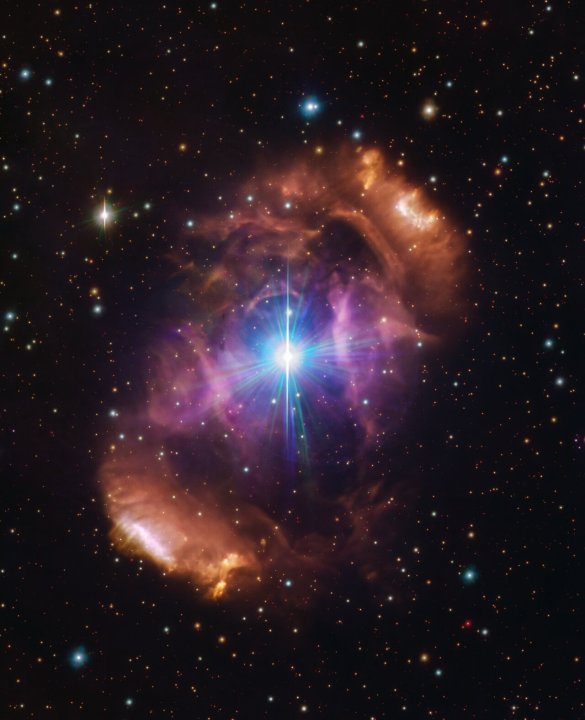A gorgeous nebula turns out to hold a surprise at its center: a pair of stars that don’t match as they should. Researchers looking at the beautiful NGC 6164/6165 nebula were surprised to learn that one of the pair of stars it hosts appears to be much older than the other, giving clues to the dramatic situation in which the nebula was born.
Pairs of stars aren’t unusual in nebulae, but they are typically very similar. Normally, you would expect a pair to be similar in terms of age and mass, as they would have formed around the same time. But in this nebula, located 3,800 light-years away, one member of the pair is 1.5 million years older than the other, and the younger star is also magnetic, unlike its older counterpart.

“When doing background reading, I was struck by how special this system seemed,” said the lead author of the new research, Abigail Frost of the European Southern Observatory in Chile, in a statement. “A nebula surrounding two massive stars is a rarity, and it really made us feel like something cool had to have happened in this system. When looking at the data, the coolness only increased. After a detailed analysis, we could determine that the more massive star appears much younger than its companion, which doesn’t make any sense since they should have formed at the same time!”
The researchers got clues to the mystery from the nature of the nebula itself, as it appears to be very young compared to the stars, at just 7,500 years old. It is also high in elements like nitrogen, carbon, and oxygen. In total, the evidence suggests that something dramatic happened to kick off the existence of the nebula.
“We think this system had at least three stars originally; two of them had to be close together at one point in the orbit whilst another star was much more distant,” explained another of the researchers, Hugues Sana of KU Leuven in Belgium. “The two inner stars merged in a violent manner, creating a magnetic star and throwing out some material, which created the nebula. The more distant star formed a new orbit with the newly merged, now-magnetic star, creating the binary we see today at the center of the nebula.”
This scenario can also help astronomers learn about how some massive stars acquire magnetic fields, which can happen after a merger. Massive stars don’t stay magnetic for very long compared to their long lifetimes, so this is the first time researchers have seen evidence of this magnetism following a merger.
The research is published in the journal Science.



